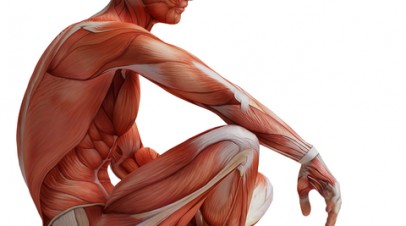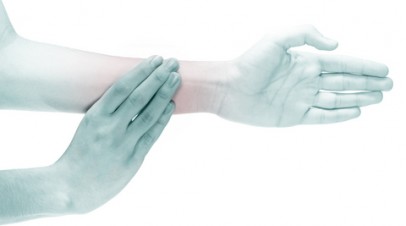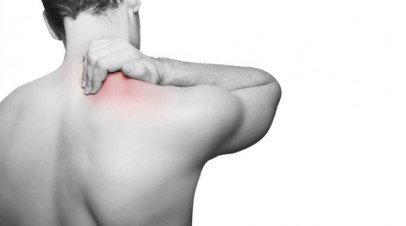Winning the Battle Between Sleep and Pain
 Regardless of what ailment lands you in a doctor’s office one of the first questions any physician asks is ‘How have you been sleeping?’. Getting enough sleep is almost as important as eating right and getting daily exercise. Without the right amount of rest and the right kind of rest, our bodies simply don’t function as well as they should.
Regardless of what ailment lands you in a doctor’s office one of the first questions any physician asks is ‘How have you been sleeping?’. Getting enough sleep is almost as important as eating right and getting daily exercise. Without the right amount of rest and the right kind of rest, our bodies simply don’t function as well as they should.
When an individual is dealing with chronic pain of any kind, whether joint pain or some other musculoskeletal pain, the contributing factor that first beckons attention is usually an injury or pre-existing condition as the cause. More and more individuals are discovering that a lack of proper sleep is contributing to their daily or even to their occasional pain.
The relationship between sleep and pain is cyclic. When a person is experiencing chronic pain, they usually can’t sleep well and when a person doesn’t get enough sleep, the pain worsens. It can be a never ending cycle of discomfort that leaves patients staring at the ceiling wishing for relief and waking to discover that they never really slept at all.
When we lay down to rest at night we move through a series of different levels of sleep. There is light sleep, deep sleep and REM sleep. We move through these 3 different levels of sleep about 3 to 5 times in a night. Pain interrupts these sleep cycles. Whether you suffer from shooting pains or from constant low level discomfort pain, it can interfere with your sleep cycle bringing you out of deep sleep and back into light sleep or even causing you to wake up completely at various times throughout the night. In many cases, the chronic pain only interrupts our deep sleep and we don’t remember waking at all, only the feeling of not “really sleeping”. Either way, your body isn’t getting the amount of sleep it needs.
Not getting enough sleep can add new pain on top of your already existing pain. Not getting a good night’s rest can cause headaches, back pain, TMJ, contribute to Arthritis, nerve pain, cramping and more. There are even extensive studies into the connection between Fibromyalgia and sleep deprivation.
How can you break the connection between sleep and pain?
 As long as your pain exists, it is going to be a bit tougher to get the rest you need, but following healthy sleeping practices is a great way to get on the track towards sleeping well with pain. For starters you should cut out caffeine and alcohol from your diet. It can be a struggle to get through the first days of life without caffeine and/or life without alcohol, but ultimately caffeine drinks are interfering with your sleeping and waking patterns and elimination of these will restore your natural sleeping patterns.
As long as your pain exists, it is going to be a bit tougher to get the rest you need, but following healthy sleeping practices is a great way to get on the track towards sleeping well with pain. For starters you should cut out caffeine and alcohol from your diet. It can be a struggle to get through the first days of life without caffeine and/or life without alcohol, but ultimately caffeine drinks are interfering with your sleeping and waking patterns and elimination of these will restore your natural sleeping patterns.
Keeping the intense exercise for the morning and only do moderate evening exercises will help to you back on the right sleeping schedule. While exercise is great and you the more you get the better, intense exercise that stimulates a lot of adrenaline can actually keep you awake more at night as your body is pumped up and ready to go. Try an evening walk or light jog instead.
Afternoon naps may seem like a great idea, but avoiding napping is actually the better path to some real sleep. No matter how tired you might be, the more you sleep during the day, the less you are likely to sleep at night. It is best if you relax before bed and make sure that your bedroom is a calm sleeping place. Don’t allow your sleeping space to become a drop off spot for miscellaneous household items like laundry and toys. Take out the television and just make a quiet space for resting. If you are in bed and can’t sleep, get out of bed and do something. Reading a book is a great way to occupy your mind and tire out your eyes and naturally drift off into sleep.
You will find little argument about the connection between sleep and pain and the serious problem it can become. Chronic pain can throw your entire life out of balance in a matter of days. There are several medications that can assist in relieving pain to allow sufferers to get solid rest as well. No medications, even over the counter medicines should be ingested without consulting your physician.
If you are interested in relieving your chronic pain, we encourage you to contact our office to see if Primal Reflex Release could be the answer to your pain. One quick consultation and you could be on your way to sleeping pain free in as little as one session. Call today to find out if PRRT can break the connection between pain and sleep for you.
Understanding Pain Caused by Calcium Deficiency
 Very few people recognize that calcium is a building block for our entire planetary system, but most people understand the value of calcium for our bodies. The greatest function of calcium in the body is its work with phosphorus to build and maintain healthy strong bones and teeth. The calcium state in our bodies and more specifically our bones is constantly fluctuating depending on our intake and our body’s needs. While many people understand what calcium means to bones and teeth, it is important to understand that our calcium also plays a role the soft tissues, intercellular fluids and blood meaning that it affects so much more and a deficiency in calcium could even be the problem behind your chronic pain.
Very few people recognize that calcium is a building block for our entire planetary system, but most people understand the value of calcium for our bodies. The greatest function of calcium in the body is its work with phosphorus to build and maintain healthy strong bones and teeth. The calcium state in our bodies and more specifically our bones is constantly fluctuating depending on our intake and our body’s needs. While many people understand what calcium means to bones and teeth, it is important to understand that our calcium also plays a role the soft tissues, intercellular fluids and blood meaning that it affects so much more and a deficiency in calcium could even be the problem behind your chronic pain.
The symptoms of calcium deficiency blend so well into our everyday lives that they often go unnoticed or at least don’t set off any alarms for greater attention. Often times people lacking in calcium will appear pale and listless, feel very tired and sort of come off as lazy. This behavior may be misunderstood as an illness rather than a deeper level problem. It isn’t uncommon for a simple calcium deficiency to become far more complex when it begins to cause heart palpitations, muscle cramps, insomnia, chronic pain and an overall feeling of discomfort associated with activity. These are actually the signs of a serious calcium deficiency.
Chronic pain and specifically leg pain can be a clear indication of calcium deficiency and is often an early sign of osteoporosis. Tetany is a nervous condition caused by calcium deficiency that is also characterized by muscle cramps, chronic pain, and numbness or tingling in your appendages. Additionally, calcium deposits can grow to a point where they interfere with muscles and create chronic pain with movement.
How Can Calcium Help With Your Pain?
Calcium acts as a natural tranquilizer in our bodies. It has a calming effect on our nerves which in turn has a calming effect on our muscles helping to reduce chronic pain, especially pain associated with injuries that would traditionally require physical therapy. Calcium therapy is a known treatment for various forms of arthritis and is an obvious treatment for tetany.
When looking at patients for treatment with our primal reflex release technique, we examine their diet and make suggestions to add calcium as well as its helpers phosphorus and vitamin D. As most of our clients are dealing with pain related to injuries that are muscular and ligature in nature, it is important that their bodies have the appropriate nutrients to help aid in the healing process after primal reflex release technique is administered.
Adding Calcium
 Calcium is found in a variety of food. How much calcium our bodies absorb and how efficiently that absorption occurs is a job handled by the parathyroid gland. There are many dietary combinations that inhibit the absorption of calcium including things like caffeine, fatty acids, and fluoride. There are a variety of calcium supplements available and the average adult requires between 800 and 1000 milligrams of calcium a day. If you do choose to take supplements, then you should select one that is strictly a calcium supplement. Most multi-vitamins are not adequate sources of calcium as the calcium itself may block the absorption of other nutrients.
Calcium is found in a variety of food. How much calcium our bodies absorb and how efficiently that absorption occurs is a job handled by the parathyroid gland. There are many dietary combinations that inhibit the absorption of calcium including things like caffeine, fatty acids, and fluoride. There are a variety of calcium supplements available and the average adult requires between 800 and 1000 milligrams of calcium a day. If you do choose to take supplements, then you should select one that is strictly a calcium supplement. Most multi-vitamins are not adequate sources of calcium as the calcium itself may block the absorption of other nutrients.
Obviously, there are many foods we can eat that are high in calcium and you’ll be happy to know that although tinned fish with bones is one of the best sources, a good old fashioned glass of 2% milk is almost a match with 297 milligrams of calcium. Other sources include yogurt, tofu, peanuts, cheese, and soybeans. You should always consult a physician before altering your diet or taking supplements of any kind and this especially true when you are looking for answers to chronic pain.
Magnesium Could Keep Your Muscles Free From Pain
 Wow! Magnesium. Who knew how powerful of an element our little friend magnesium could be. Well, a lot of people actually, but there are even more people who are living completely unaware of all the power magnesium holds for your overall well being and, even more importantly, for helping you become free from pain.
Wow! Magnesium. Who knew how powerful of an element our little friend magnesium could be. Well, a lot of people actually, but there are even more people who are living completely unaware of all the power magnesium holds for your overall well being and, even more importantly, for helping you become free from pain.
Magnesium is a necessary macro mineral that our bodies require for proper function. The human body actually needs 100s of milligrams of magnesium every day. Inside our bodies magnesium can be found inside our bones, our muscles and in our cells and bodily fluids. Our bodies do not produce magnesium on their own, instead we must absorb our necessary magnesium from the foods we eat and from the supplements we take.
Magnesium is related to so many different functions in the body that a magnesium deficiency can surface in a variety of ways. From muscle weakness and tremors to headaches and elevated blood pressure, not getting enough magnesium can create a pretty uncomfortable and rather unexplainable situation. Chronic pain and especially muscle pain can be associated with magnesium deficiency.
Magnesium works with its good buddy calcium to help to regulate the body’s nerves and muscle tone. Magnesium actually performs as a gate keeper for the amount of calcium allowed into a nerve cell. If there is a rush of calcium into a nerve cell, it will activate the nerve. This continued over-activation of the nerve causes the nerve to send too many messages to the muscle resulting in a muscle that over-contracts and becomes uncomfortable. Yes, we are talking about chronic pain of the muscle variety. Not just pain, but muscle fatigue and cramping like you wouldn’t believe; all because we didn’t have enough magnesium in our daily diet.
What can you do to determine if your pain is associated with a magnesium deficiency? Well eat more magnesium rich foods of course! As always, we suggest that you get your magnesium from the foods you eat rather than a supplement, but using a supplement isn’t against the rules either. Foods high in magnesium include swiss chard, spinach, pumpkin seeds, soybeans, sesame seeds, halibut, black beans, sunflower seeds, almonds and cashews.
Another way to deal with chronic pain associated with the muscles is to try a magnesium oil or cream that is applied to the skin over the area that is in pain. The magnesium is absorbed through the skin and is noted for immediate relief of muscle pain. There are also some practices of a magnesium oil foot bath in which you soak your feet in the magnesium oil for at least an hour allowing your skin to absorb the magnesium. These skin absorption approaches have not been tested as much as simply increasing the amount of magnesium you get in your diet.
Too much magnesium can result in diarrhea and other digestion issues. As always, you should consult your doctor before making changes to your diet especially if you are taking other medications to deal with your chronic pain. What we eat has so much to do with how our bodies perform. We are intricate machines that need the right balance to operate properly.
We talk to a lot of people everyday about the pain they are experiencing while we discuss if PRRT (Primal Reflex Release Technique) is the right treatment for pain. We also talk to our patients about their diet and exercise to see if we can also make suggestions that will help them be free from pain for years to come.
Nightshades and Pain – What’s the Connection?

Some people have heard about and avoid these common food items known as nightshades while others have never heard a single warning about their potential for delivering pain. When we review a person’s case for treatment of pain with Primal Reflex Release Technique, we do take a close look at the individual’s diet and would like now to use this platform to better inform people about these foods and why when you are dealing with pain, adjusting your diet is definitely something you will want to try.
What are Nightshades exactly?
There are over 2800 species of nightshade plants (more accurately plants, herbs, shrubs, trees and foods) and each has its own unique properties and constituents. What is common to this impressive list of plants is that each belongs to the scientific family Solanaceae, commonly refered to as solanine, and to the scientific order Polemoniales. The nightshades that most people have heard of are part of the pharmaceutical family and include mandrake, tobacco and belladonna, but the truth is that may common and popular food items are also part of the nightshade family and in a person sensitive to solanine, these foods could be the answer for unexplained chronic pain.
So what’s the Story with Nightshades and Pain?
As we said in the previous section, foods, herbs and drugs in the nightshade family are really only an issue for individuals with sensitivity to solanine. More specifically, it is the alkaloids in these items that can impact the nerve-muscle function of the body, compromise joint function as well as digestive function in humans. Chronic joint pain unassociated with injury or illness may be the result of alkaloid sensitivity. People with chronic joint pain and arthritis may want to remove alkaloid foods from their diet to determine if these foods are playing a role in their chronic pain. The level of alkaloids in nightshade foods is much lower than what can be found in nightshade herbs and plants used for pharmaceuticals. The cooking of nightshade foods actually lowers the level of alkaloids even more. This is why most people aren’t affected by the ingestion of nightshades in prepared foods, but there still remains a portion of the population who remain sensitive to even the lowest levels of alkaloids found in the cooked and raw versions of some foods.
Which Foods are Nightshades?
The first group of nightshades can be found as fruits and vegetables. These include: Potatoes, tomatoes, certain species of hot and sweet peppers, eggplant, ground cherries, tomatillos, garden huckleberry, pepinos, naranjillas, pimentos. To expand on this list though, you must consider all potato based items such as chips, knishes, some potato breads, soups and vodka. The same is also true of tomato where it is used in ketchup, seasonings, baked beans and about a million other foods. Peppers as well are hidden in the broad spices category on many package labels. There is a new concern about soy products that are being genetically modified with the petunia gene which is a nightshade; purchase organic if you plan to eat soy products.
Also under the nightshade category you will find many common spices including paprika, red pepper, cayenne and tabasco sauces. These spices may also be hidden in that broad “spices” category on some ingredient lists.
Getting More Specific About Alkaloids, Nightshades and Pain
While the effects of alkaloids and nightshades on joint pain isn’t as concrete as the evidence of their effect on the nervous system, it is still believed to be a valid recommendation to test the removal of alkaloids from one’s diet and prescriptions to help eliminate or relieve chronic pain especially in people with joint pain and arthritis. Still in the research stages, there is evidence to indicate a connection between potato alkaloids and damage caused to joints by inflammation and an altered mineral state. Some research has also shown that there is a connection between alkaloids and an excessive loss of calcium from bone and of disproportionate deposits of calcium in soft tissue.
If you are visiting our Primal Reflex Release Technique page because of chronic pain we strongly advise you to take a look at your diet as well as contacting us for a consultation. The answer to your pain may be in what you eat. Anyone suffering from joint pain should try to eliminate nightshades from their diet for one month and see if there is any change in the level of pain.
Omega 3 for Joint Inflammation & Joint Pain
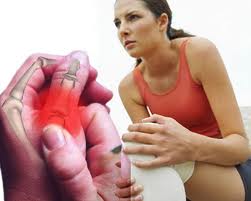 As we age, no matter how perfectly, there are little aches and pains that creep into our daily lives. Some hurt more than others. Truth be told, muscle and joint pain can start at any age and are especially prevalent in people who have suffered some form of injury. Whether you are 15 or 51, finding ways to relieve joint pain can be challenging.
As we age, no matter how perfectly, there are little aches and pains that creep into our daily lives. Some hurt more than others. Truth be told, muscle and joint pain can start at any age and are especially prevalent in people who have suffered some form of injury. Whether you are 15 or 51, finding ways to relieve joint pain can be challenging.
While the list of pharmaceutical products for pain is long, the list for natural alternatives to treat pain is far more manageable. Dietary change is one of the simplest and most effective ways to start to relieve chronic join pain, especially pain caused by inflammation. In particular, the implementation of Omega 3 fatty acids into a person’s diet is an excellent way to decrease chronic joint pain.
Omega 3 has been widely noted for its health benefits and in particular its use as a pain reliever. Additional benefits include reduced risk of heart disease and stroke and it is even noted to reduce symptoms associated with hypertension, depression, joint pain, and rheumatoid problems. Such claims can leave one wondering just how Omega 3 helps with all these things. One way research has attributed Omega 3 to such success is that Omega 3s encourage the production of body chemicals that help to control inflammation in the joints, the bloodstream and in the body’s tissues.
While all the benefits of Omega 3 are great news for people suffering from joint pain and other ailments, it is not the easiest vitamin to get into your body. Our bodies do not produce Omega 3. Omega 3 is only absorbed through the foods and supplements that we ingest. Additionally, Omega 3 fatty acids are a collection of several nutrients rather than just a single nutrient and the absorption of Omega 3 into our bodies depends largely on the source.
There are Omega 3 supplements available, but the absorption rate of supplements is much lower than making dietary changes to include foods that are naturally high in Omega 3s. Either approach will supply your body with these necessary essentials, but introducing foods high in Omega 3 into your diet is the best way to start getting relief from joint pain at the quickest rate. Coldwater fish is an excellent source of Omega 3, but many people have concerns over mercury contamination in fish. While these concerns would be valid in a diet extremely high in fish, simply adding high Omega 3 fish such as salmon, mackerel or tuna to one or two meals a week would provide a great weekly dose of Omega 3 without raising concerns over mercury.
Other food sources of Omega 3 include broccoli, cantaloupe, kidney beans, spinach, grape leaves, cauliflower and walnuts. Flaxseed is also an excellent source of Omega 3 nutrients with ground flaxseed ranking highest of its forms for Omega 3. Combining these Omega 3 rich foods with foods high in Omega 6 like eggs, poultry and cereals and cooking oils like olive oil that are high in Omega 9, you can truly reap the benefits of Omega 3 for joint pain relief.
Can Vitamin D Help You Be Free From Pain?
 A lot of people suffer from chronic pain without any real physical injuries, illnesses or disease to account for their discomfort. This can be muscle pain, joint aches and pain or even bone pain that has lasted for an extended period of time. Often a patient will go through a series of x-rays, scans and multitudes of expensive doctor visits ending in no real information about the source of their pain. What pain sufferers don’t realize is that the solution to their pain could be as simple and inexpensive as taking a vitamin supplement each day.
A lot of people suffer from chronic pain without any real physical injuries, illnesses or disease to account for their discomfort. This can be muscle pain, joint aches and pain or even bone pain that has lasted for an extended period of time. Often a patient will go through a series of x-rays, scans and multitudes of expensive doctor visits ending in no real information about the source of their pain. What pain sufferers don’t realize is that the solution to their pain could be as simple and inexpensive as taking a vitamin supplement each day.
Chronic pain tends to leave patients feeling depressed and quite hopeless especially when there is no obvious cause for their discomfort. As pain increases, our movement decreases and our muscles become weak, adding to the discomfort and that overall feeling of just being defeated. There is hope. There is help and you CAN be free from pain.
Many recent studies have noted that people who suffer from long lasting aches and pain often are also lacking in Vitamin D. The “sunshine vitamin” may be your best friend in solving your bodily aches and pains. Our bodies produce Vitamin D naturally in our skin when it is exposed to the Sun; however many people, especially those in less sunny climates, don’t get enough Vitamin D on a daily basis.
Our kidneys and liver break down Vitamin D to form an active chemical that functions very similarly to hormones. It works in almost every part of our body as it is essential to our tissue, organs, muscles, nerves and brain. A lack of Vitamin D has been linked to muscle pain for years. Even more importantly, Vitamin D must be present in order for our bodies to absorb calcium. If calcium is in short supply, our bodies will take calcium from our bones to function which leave bones weak and fragile, as well as susceptible to pain.
While Vitamin D is fortified into many of the foods we eat and even in the beverages we drink because it doesn’t occur naturally in many foods except fish liver oil. It takes a lot of Vitamin D fortified food to get the right daily dose of our “Sunshine Vitamin”. Not many people would consider drinking 10 glasses of milk or eating 17 bowls of fortified cereal a day, except those in a lot of pain perhaps. So the best way to get more Vitamin D is to get outdoors and let your skin do its thing. The next best way to add Vitamin D to your day is to take a multivitamin which has at least 400 to 800 IU (you’ll find this measurement on your vitamin packaging). A healthy pain free adult should ingest at least 1000IU of Vitamin D each day. Taking a multi-vitamin in combination with eating Vitamin D fortified foods and a solid daily dose of sunshine and you should be on the right track for ample Vitamin D intake.
If you are suffering from chronic pain, your daily dose of vitamin D should jump to 2000 IU daily. You can use an additional Vitamin D supplement of about 600 IU (this is in addition to your multivitamin and outdoor time) to reach this goal. It is important to understand that there is no immediate relief when using Vitamin D to treat pain. Vitamin D is not an analgesic. It could take weeks or even months to feel improvements. You must be patient and diligent, but should begin to have a better overall well-being feeling.
Vitamin D should not be taken in place of prescribed pain medications. Additionally, you should always consult your physician before taking doses of Vitamin over 1000IU. Vitamin D may have interactions with other prescriptions. Additionally some illnesses and diseases prevent the absorption of Vitamin D or using it properly. Always be safe and consult with your physician before taking supplements while on medications or under the care of a physician for kidney or liver disorders, Chron’s disease, celiac disease or irritable bowel syndrome.
Primal Reflex Release
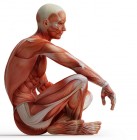
There comes a point where you have to break the pattern of pain. You NEED to change how you think about your treatment of pain. It is at this same point that you will find P.R.R.T. – Primal Reflex Release Technique. PRRT has been helping people be free from pain around the globe, not just here at John Iams’ center in Poway, California.
PRRT can be used as an alternative to physical therapy or as an addition to an existing physical therapy treatment. There are many people who question the validity of PRRT for the treatment of pain. This is because Primal Reflex Release Technique treats pain in a completely new way and it is a treatment for pain that doesn’t require narcotics or years of follow-up to succeed.
The basic premise of PRRT is that pain is the result of an over stimulation of a person’s primal reflexes. Our primal reflexes are those instinctive muscular-skeletal reactions we’ve had since birth. When a person is caused sudden physical trauma and even emotional trauma, their bodies react instinctively and in many patients dealing with pain it is this reflex reaction that gets stuck in a holding pattern creating continuous pain. Primal Reflex Release works to reset your primal reflexes and most patients are free from pain in fewer than 6 visits.
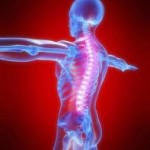 All of our primal reflexes are intrinsically linked to our central nervous system which is also the source of many other illnesses and everybody’s arch nemesis Stress. Due to this link of all our body’s systems, use of the Primal Reflex Release Technique has been found to help with other systems and illnesses outside of pain as well.
All of our primal reflexes are intrinsically linked to our central nervous system which is also the source of many other illnesses and everybody’s arch nemesis Stress. Due to this link of all our body’s systems, use of the Primal Reflex Release Technique has been found to help with other systems and illnesses outside of pain as well.
It’s not too late to be free from pain. Primal Reflex Release Technique gives results. There is no question about it. Get a consultation and discover if you too can be free from pain today!
Reflex Speed Pain Release
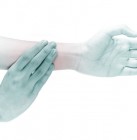
Our natural reactions are quick, often relying on adrenaline to move our bodies into immediate motion. It is this same primal reflex speed that can help you be free from pain today.
Many people don’t realize that our reaction time is really a measure of our reflex speed. The difference between reaction time and primal reflexes is that with reaction time you have to figure in the amount of time it takes your brain to process what is happening and make the appropriate decision on what next action to take. When it comes to our primal reflexes, there is almost no communication; our bodies simply react instinctively to the situation at hand most often in an effort to protect ourselves from injury or pain.
It is these instinctive reactions that can help you become free from pain. The greatest benefit of Primal Reflex Release Technique is the speed at which it works to deliver results. Most pain and even many illnesses are the result of our bodies’ natural reactions to a situation; our primal reflexes become almost stuck in a pattern that causes recurring pain. With P.R.R.T., you can be free from pain using the same natural responses that attempted to protect you from pain in the first place.
Don’t delay. Get a consultation and be free from pain today with Primal P.R.R.T.
PRRT™ is amazing.
When The Pain Remains
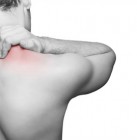
It is common in today’s culture to mask chronic and acute pain with medications, but during that time between doses, when the pain remains; many people start to explore new ways to be free from pain.
Different types of injuries cause different levels of pain and the length of time that the pain remains can vary from days to years. There are many people who will deal with chronic pain for their entire lives due to untreatable conditions and physical ailments, but there are just as many people living daily with chronic pain that could be free from pain with the Primal Reflex Release Technique from John Iams.
After most physical injuries, patients are prescribed a rigorous physical therapy routine that is vital to their muscle mass recovery, but often does very little for managing their ongoing pain. Outside of medication, pain management is often only explored by masseurs with limited success. PRRT or Primal Reflex Release Technique takes a different approach to helping people become free from pain.
PRRT was developed by John Iams and is practiced world wide as a successful treatment for pain. Many of those success stories are achieved in just one visit to the SuperSpine center in Poway, CA. If you have been dealing with chronic pain and want to be free from pain without medications, then you need to get a consultation today!
After nearly a decade of NFL experience with numerous surgeries no therapy even came close to PRRT™ in rapid, lasting pain relief.
The Answer to Your Pain

Pain can have such a dampening effect on a person’s everyday life. It is easy to become depressed and lethargic when you have difficulty participating in simple daily activities. Traditional treatments for pain include medications including narcotics and sometimes non-narcotics, invasive surgeries, sometimes multiple surgeries and in most cases some form of intense physical therapy.
Pain has such a huge impact on an individual’s life not just physically, but emotionally, vocationally, financially and socially. It doesn’t just affect individuals, it affects entire families. It is time for the vicious cycle of pain to stop. It is time to embrace alternatives to physical therapy that work for the long run and help you to be free from pain today.
Is Primal Reflex Release Technique (P.R.R.T) truly an alternative to physical therapy that gets results? Yes! The goals in every pain management plan, including physical therapy, are to decrease pain and suffering, improve physical functions and to advance the quality of a patient’s daily life. PRRT does all of these things and more.
 No one really questions if massage works or if acupuncture works and these are both valid alternatives to physical therapy as well. There are several manipulative and body based therapies that rely on the structures and systems of the body to help manage pain, but this isn’t about pain management. This is a way to be free from pain for the long term.
No one really questions if massage works or if acupuncture works and these are both valid alternatives to physical therapy as well. There are several manipulative and body based therapies that rely on the structures and systems of the body to help manage pain, but this isn’t about pain management. This is a way to be free from pain for the long term.
In just one visit, John Iams will be able to tell if PRRT is the right treatment for your pain. In many cases, you’ll start to see results and be free from pain after that very first visit. Yes! This is an alternative to physical therapy that works. Learn more about how Primal Reflex Release Technique can help you be free from pain today!
I am completely amazed at the quickness and effectiveness of PRRT™


